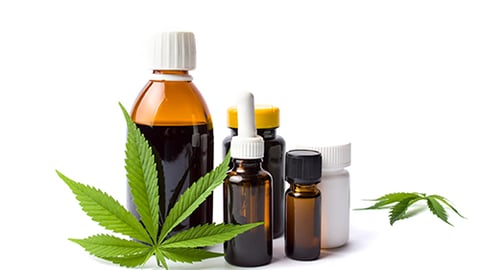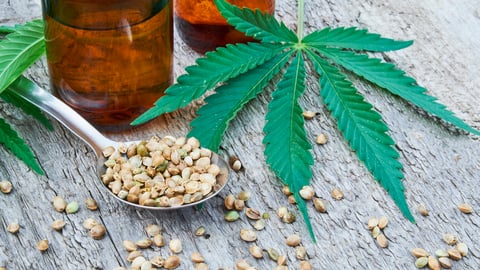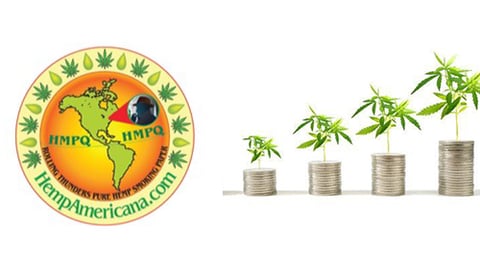5 Strategies to Win at Retail With Cannabis
The availability of legal cannabis products in the United States, including cannabis and hemp-derived cannabidiol (CBD), is greater than ever, with consumer interest continuing to grow. CBD products are now easily found in mainstream retail stores and the number and variety of products will undoubtedly expand further.
It’s no surprise that grocers are hopping on the bandwagon, as well they should. Spending on cannabinoid products is expected to reach $45 billion by 2024, with CBD serving as a major driver of this growth. To put the market opportunity that cannabinoid-infused products represents into context, the current U.S. snacking market delivers roughly $40 billion in annual revenue. The CPG industry hasn’t experienced new market opportunities of this size for decades, if ever!
For retailers to take maximum advantage of the opportunities created by cannabinoid products, retail marketers must first answer several questions. They must determine who their target shoppers are, what CBD products to explore, and how to draw shoppers in and away from other channels such as dispensaries, vape shops, salons, spas, vets and cafes.
Potential Shoppers Often Aren’t Who You Think
Today’s cannabinoid buyer reflects a cross-section of the U.S. population, spanning age, gender, income, race and state of health. Their average age is 42; they tend to work full-time, live in cities, have creative streaks and are very social. Just over 70% use cannabis products for recreational or social purposes, while 56% use them for health and medical reasons, with 33% of them using them for both.
Surprisingly, the general population is quite uneducated when it comes to the effects of cannabinoid. Research reports that 55% of U.S. adults 21 and older don't understand the difference of effects between CBD (non-intoxicating) and THC (intoxicating). Another 60% or so either don't know or incorrectly believe that consumption of any product containing hemp will result in a psychoactive or intoxicating effect. It's therefore not surprising that only 22% of the U.S. adult 21-plus population understands the term “cannabinoids” and can accurately articulate the definition.
Strategies for Retailers to Win in the Cannabinoids Market
To take maximum advantage of the cannabinoid opportunity, retailers should plan strategically in critical areas such as which products to carry, how to display and promote them, and how to structure pricing. The approaches below will assist retailers through this process:
- Collaborate With Manufacturers to Ensure Transparency and Accuracy: Working with manufacturers in areas such as transparency on CBD content, product labeling accuracy and claims will create a positive consumer experience and contribute to brand and channel loyalty.
- Study Dispensary Trends: Dispensaries remain the most mature legal channel for purchasing cannabinoid products. Dispensary shopper demographics indicate a propensity to purchase in the grocery channel. Further, the types of CBD products that consumers purchase in dispensaries offer a strong indication of purchase behavior within grocery retail. Dispensaries are, and will continue to be, a leading indicator of product trends such as form, flavor, brand, messaging, dosing and pack counts.
- Identify and Focus on High-Value Shoppers: Within a given store or store cluster, identify shopper segments that already purchase or have the propensity to purchase cannabis products. Stock product forms that are in line with your retail banner, and offer the greatest appeal to your identified groups, based on their behaviors in dispensaries, if possible. Align planograms, promotions, assortments and other activities based on the needs of these shoppers. Given that CBD products are new within CPG retail, experiment with different approaches in these areas; e.g., creating a stand-alone CBD store area versus stocking CBD products alongside similar pain relief products.
- Fill the Education Gap: The lack of correct information around cannabinoid products creates a unique opportunity for grocery retailers to drive revenue and shopper loyalty. Similar to beauty advisers or butchers, “budtenders” (dispensary employees) work to guide and advise shoppers in selecting the cannabinoid products best suited to their needs and desired effects. Take a page from the dispensary channel playbook by implementing unique and creative services to educate shoppers while also creating a personalized experience. Cannabinoid product consumers desire a positive, reliable experience, and they often rely on perceived experts for trusted guidance.
- Look for Cross-Promotional Opportunities: Many shopper segments are open to cannabis-related experimentation. Look to the dispensary channel to understand product forms, consumer segments and how they intersect with mainstream categories. For example, research shows that hemp-derived CBD consumers over-index on consuming organic foods and prefer local and natural brands; it would therefore be reasonable to expect these same consumers to favor an organic CBD product of local and natural origin.
- Determine the Impact of Cannabinoids on Other Aisles: The addition of cannabis products to a market is likely to impact sales in other categories. Recent research shows that cannabis users decreased purchases of OTC products to treat pain by 50%. The same research noted that 65% of cannabis consumers also consume alcohol, although the trends of dual consumption are complex and nuanced.
While retailers must make several considerations in terms of strategies and supplier relationships, the market opportunity for cannabinoid products is simply too great to ignore. A winning cannabinoid strategy will require an understanding of shoppers’ needs and preferences, as well as creating an engaging and educational experience that builds trust. The U.S. market has never been so well positioned for growth, and cannabinoids will be a significant component in the growth of the CPG economy.








